Samsung Galaxy Nexus & Ice Cream Sandwich Review
by Brian Klug & Anand Lal Shimpi on January 18, 2012 1:34 PM ESTDisplay
Another huge axis of improvement lately has been the mobile display category. It’s an ironic turn of events which has led to the mobile side being where all the improvement is taking place for displays in general. On one side of the industry we have the PC display market, which is currently locked in a dramatic race to the bottom (1080p 27" displays, decline of the 16:10 aspect ratio, etc.), and on the other side we have mobile displays where OEMs are rushing to outdo each other every major product cycle. In fact, 2012 might go down as the year when mobile display resolution eclipses the desktop.
Back on topic however is the Galaxy Nexus display - it’s a 4.65" diagonal, Super AMOLED HD 1280x720 affair. If you’ve followed Samsung’s AMOLED naming scheme, you can pretty much tell everything that there is to superficially know about the display just from the name. Super connotes an optical bonding (read: no air gaps or their pesky 4% Fresnel reflections) of the display and the entire stack above it, consisting of capacitive layer and top glass.
HD connotes, well, 720p HD, and finally the absence of Plus connotes the presence of PenTile RGBG. On that last note, we made a prediction that PenTile would be very hard to see on the Galaxy Nexus based on some pixel pitch calculations, and this turns out to be the case.
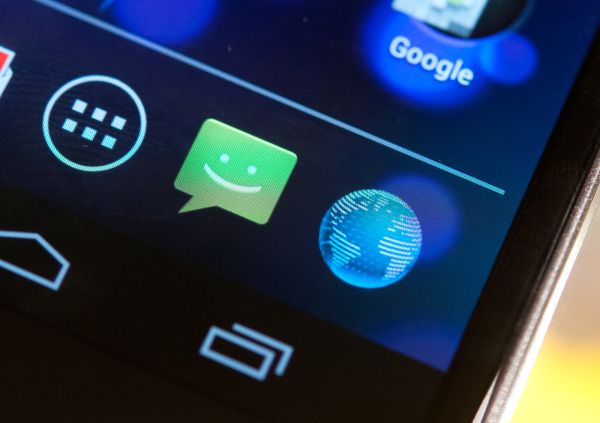
Decently close to the Galaxy Nexus display with a macro lens - hard to make out any subpixels
For me at least, the Galaxy Nexus display exceeds my visual acuity - I cannot pick out subpixels at all on the Galaxy Nexus. Quite literally, the RGBG subpixel stripe is now small enough that it is beyond visual acuity at standard viewing distance (1 foot).
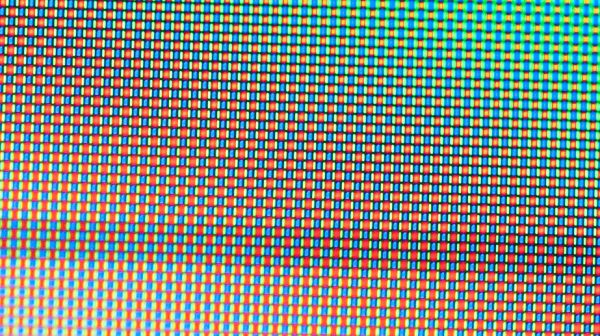
Extreme macro shot of the Galaxy Nexus' display for illustrative purposes showing PenTile RGBG
If 2011 was the year where OEMs countered the iPhone’s retina display with qHD panels, 2012 is the year where they finally start to exceed that 330 ppi number. It seems as though 1280x720 WXGA will be the new WVGA or qHD for 2012, and already there are a bunch of 720p devices arriving on the market - phones like the HTC Rezound, LG Nitro HD, Galaxy Note.
Last time we compared pixels and subpixels per inch in the diagonal on a few phones. Many people pointed out alternative ways to compute everything, but in the end the aim was to set expectations for how visible PenTile would be, and the conclusion was: not very. This time, I think it makes sense to compare the actual angular subtense of the subpixels so we can appreciate whether they’re visible or not, rather than deal with another back and forth about whether measuring along the diagonal is valid or not anymore. It's easy to be lazy and just do things entirely wrong, but the actual angular subtense of a subpixel should be the canonical measure we use to determine whether you can see pixels or not, since that's the annoyance after all. Visual acuity for the average human eye is 1 arcminute (something drilled into my head from endless optical engineering classes), and perfect human vision is just below that at around 0.7 arcminutes. I have 20/15 which puts me around 0.75 arcminutes, and I can't see subpixels on the Galaxy Nexus unless I really, really try.
It’s actually a challenging thing to codify whether or not you’ll be able to see PenTile, since color (wavelength) makes a huge difference. Further, visual acuity is itself a hard thing to qualify - for example, consider how much resolution is enough to identify versus detect something, and then how human vernier acuity (aligning something) is very good, and all of this is a function of the light's wavelength. For example, the on-off pattern when looking at solid green is just about the worst case possible - it’s a square wave (100% modulation) in the green right where the eye is most sensitive. In the past, it struck me that other members of the tech press were perhaps unconsciously taking photos of the green battery indicator to show the presence of PenTile or not since that's where subpixels are most visible. As an aside, most of the UI is now blue in 4.x (including battery indicator) which the eye does not have very good sensitivity to - just try focusing on something entirely blue - is this a coincidence or conscious decision to mask bad displays? For comparison, when displaying white obviously subpixels largely disappear into a sea of light. If you look at a green solid region now, you’d be hard pressed to make out the individual subpixels, and the table explains why:
| Display Subpixel Angular Subtense lower is better, human eye ~1 arcmin) | |||||||
| Phone | X subpixel angular subtense at 12" | Y pixel angular subtense at 12" | |||||
| HTC Rezound | 0.280 | 0.839 | |||||
| iPhone 4/4S | 0.290 | 0.869 | |||||
| LG Nitro HD | 0.293 | 0.878 | |||||
| Motorola Droid | 0.361 | 1.082 | |||||
| Motorola Atrix 2 | 0.373 | 1.118 | |||||
| Galaxy S II | 0.440 | 1.320 | |||||
| Galaxy Nexus | 0.454 | 0.907 | |||||
| Infuse 4G | 0.461 | 1.382 | |||||
| Droid 3 | 0.520 | 1.040 | |||||
| Droid RAZR | 0.559 | 1.118 | |||||
| Droid Incredible | 0.568 | 1.136 | |||||
| Nexus One | 0.568 | 1.136 | |||||
| Galaxy S / Nexus S | 0.614 | 1.228 | |||||
The interesting thing about the table is that it very much backs up my subjective impressions of just how visible subpixels were on previous phones. The Nexus S / Galaxy S had comparatively gigantic subpixels, and I can't stand looking at those displays to this day. Move up the line and you get increasingly better (I've sorted by x/horizontal angular subtense), with the HTC Rezound exceeding the iPhone 4S. Note that you have to consider the adjacent unlit subpixels as well to really arive at a conclusion for how visible things are going to be - on the PenTile RGBG displays, that means one adjacent unlit subpixel, and on RGB stripe, two unlit subpixels (assuming we're talking worst case 100% Green, 0% Blue, 0% Red).
While Samsung has been able thus far to increase its AMOLED pixel pitch considerably, it has come with one unintended effect. That effect is a bit of pixel inhomogeneity which results in a somewhat grainy look to the display under certain circumstances. While neither device we tested had it, others have reported lines or splotches. There’s a word for these inhomogeneities in display luminance, and it’s “mura.” The variance is no doubt very minor, but the eye is great at picking out these small changes, and it’s particular visible in certain contexts, like the grey loading screen on the Android Market. So far getting a good photo of this effect has eluded me, however, it looks like a light film grain. Stated another way, it's like a fixed pattern noise that exists at all times on the display, which seems particularly visible at some brightness levels. To be honest, it doesn’t annoy me any more than IPS display “grain” annoys me - you just get used to it after a while.
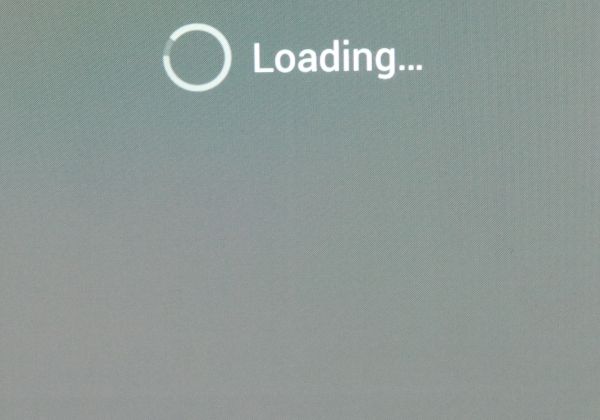
Photographing the mura on the Galaxy Nexus' display has proven a challenge
These inhomogeneities also sometimes manifest themselves as visible strips of different luminance. I haven't seen any on either of the Galaxy Nexi we have, but if you do get hardware with annoying inhomogeneities, I recommend just swapping. Again, getting photographs of the grain has proven challenging.
The display’s surface is curved, though the radius of curvature is nowhere near as curved as some of the early teaser photos would’ve had you believe. Total sag ends up being around 1.5 mm, giving a radius of curvature around 1.5 m - needless to say, it’s a very gentle curve. The other noteworthy thing about the Galaxy Nexus is Samsung’s choice of glass. Lots of people have noted that the Galaxy Nexus isn’t adorned with Corning’s popular Gorilla Glass, though it’s still a kind of fortified (and no doubt alkali-aluminosilicate) glass. It’s impossible to tell exactly what kind of glass is on the Galaxy Nexus without destructive testing on either Samsung’s or Google’s review unit. That said, if anyone breaks a display, send me the broken top glass and I’ll be able to do some compositional analysis. As an aside, compositional analysis of the top glass from different phones is something I’ve wanted to do for a while now, but requires sourcing broken glass.
We’ve also done all the usual measurements on the Galaxy Nexus - luminance and color temperature at different brightnesses selected in settings, and a run through HCFR using Francois’ excellent Screen Test Patterns app.
First off are the display charts taken at a number of different brightness settings by dragging the slider around in settings. Traditionally AMOLED has struggled to keep a flat white point. Here the Galaxy Nexus isn't bad at all, hovering just below 6500K.

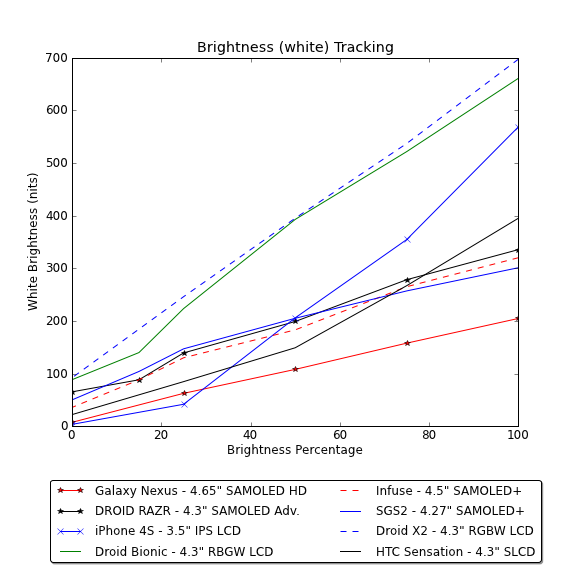
The Galaxy Nexus manages to stay reasonably close to 6500K even as brightness changes across its full range. The brightness curve is also nice and linear, though it tops out at just over 200 nits at maximum brightness.
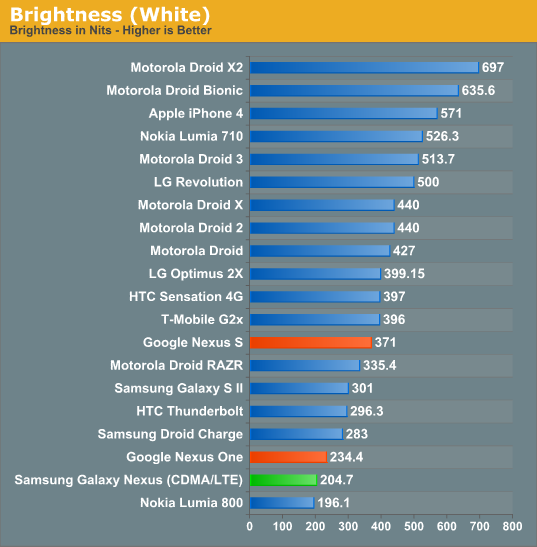
The HCFR plot and color.chc file tell an even more interesting story. The CIE chart shows how AMOLED continues to have a gamut much larger than sRGB (which is the inner triangle). It’s awesome to have more spectrum, but bad when mapping sRGB to this color space without more management, and leads to AMOLED’s oversaturation stigma.
There are more interesting things inside, too. Color temperature at 100% brightness and displaying different shades of Gray stays pretty close to 6500K as well. Gamma ends up almost all over the place, unfortunately.
The nice thing about ICS on the Galaxy Nexus is also increased color depth in many places. Previously Android’s gallery many times appeared in RGB 565, leading to visible banding. This is now almost entirely gone as well.
Viewing angles on the Galaxy Nexus, like other AMOLED devices, is superb as well. There’s practically no shift in either horizontal or vertical angles. Outdoor viewing has gotten better on AMOLED with a bunch of improvements - better AR coatings, no more air gaps, and other coatings. Out in the brightest of sunlight it can still be hard to read, however.


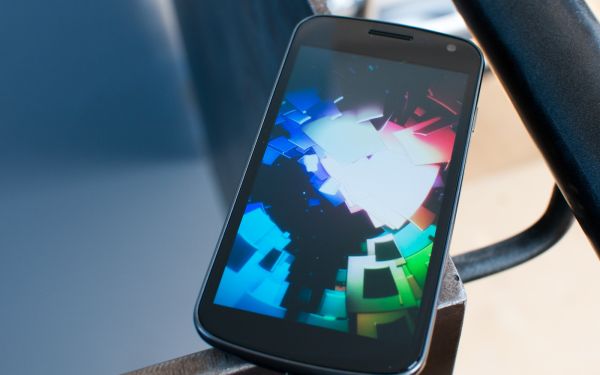
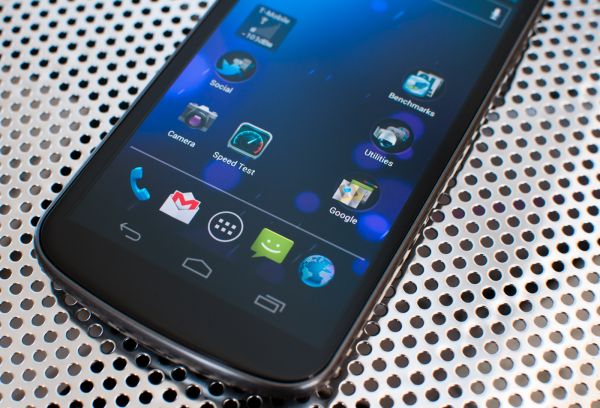





















185 Comments
View All Comments
sjankis630 - Wednesday, January 25, 2012 - link
I can comment that my Galaxy Nexus' black is as black as midnight to a blind man.The only time I see some grey type tones is when the website is colored that way.
walkman - Sunday, January 22, 2012 - link
That was a shocking detailed and informative review -- It's the sort of article that makes Anandtech my first choice for tech reviews.- The article mentioned new processors just around the corner. Was this referring to any processors other than Krait? I haven't heard any news about Krait since November PR -- Are we looking at April or June? And do we think anyone besides HTC will use Krait?
Omid.M - Sunday, January 22, 2012 - link
Processors around the corner:Krait
Tegra3
OMAP5
Exynos 5250
It's going to be a bloodbath for the next 12-18 months.
If iPhone 5 uses the MDM9160 (?) modem with LTE, I'm jumping on that. Tired of tweaking battery life on my Thunderbolt. Not sure I want to do the same with a Galaxy Nexus LTE.
And what's this I'm reading about connection issues / dropped calls on the VZW Nexus? Ridiculous.
Rictorhell - Monday, January 23, 2012 - link
I am a big fan of this site and I read the reviews and articles all of the time and I find them very informative and useful, but, I have a request.When a review is written, particularly about a certain smartphone or tablet, it is mentioned whether the device has an SD card slot and you always tend to differentiate between whether it is a “full-sized” SD slot or a “micro”SD slot. That is useful to know, but there are several actual types of SD cards available, each with a different maximum storage capacity, and you don't specify in your reviews which types of SD cards are actually supported by the device being reviewed and I think that is a bit of an oversight.
To the best of my knowledge, standard SD cards only have a maximum capacity of up to 2gb, while SDHC cards can go up to as high as 32gb, and SDXC cards, while only available right now in sizes up to 128gb, are supposed to theoretically be able to be manufactured in sizes up to 2tb.
There is a huge difference in size between 2gb, 32gb, and 128gb. Given that smartphones and tablets have substantial built in limits as far as storage capacity, I think it would be very helpful to know which type of SD card is supported by which device, if that is possible.
If I read two reviews about two different Android tablets and both reviews mention that both cards have a full-size SD card slot, as a user with a lot of media files, I'm going to be interested to know if one of those tablets can support SDXC cards while the other one cannot.
I consider that to be a major feature, to me, just as important as battery life. If you do reviews of tablets and smartphones, or even ultrabooks, and neglect to specify how much storage potential these devices have or do not have, you are making it very easy for the hardware manufacturers to simply put in second rate storage and format support, knowing that it will not be covered in reviews by sites like Anandech. Not only is this going to stunt the evolution of these devices but it's also going to mean less options for consumers.
Anyway, thank you for your time.
peevee - Tuesday, January 24, 2012 - link
Anand, please include OS version number (and carrier when applies) in the charts for performance and battery life tests. They make huge difference, as browser speeds improve, they consume less CPU time and less energy when browsing.For example, the discrepancy between iPhone 4 and iPhone 4S looks outsized and probably is the result of testing iPhone 4 with iOS much older than the current version, probably not even 4.3, and 4S with iOS 5.
skinien - Tuesday, January 24, 2012 - link
What a review!!! I'm not in the market for a new hone right now, but when the time comes, I'll be looking here for a review on prospective phones. GREAT WRITE UP!sonicmerlin - Thursday, January 26, 2012 - link
I'm sorry, but you're ignoring the fact that ICS STILL lags. If you load up a heavy site like theverge, try scrolling around while the site is loading. Your entire page stutters and freezes until everything is done loading. ICS also lags more as you load more apps onto your phone, just like all previous versions of Android. Also notice how all UI elements are flattened when pages are rendered. Try zooming in or out. The new page info appears all at once, rather than pop up individually as in iOS and WP7. This can result in lag on heavy sites.For whatever reason tech "nerds" don't seem to notice the very obvious fluidity issues. Yes once you've loaded up a site it's easy to pan around, but people don't sit there patiently waiting for websites to load. Nor do they appreciate the frequent microstutters due to garbage collection issues, or the massive standby battery drain issues that tons of Android phones experience. And even the basic phone UI itself still lags behind your finger, demonstrating an irritating rubberband affect.
It's stupid. Android will never stop lagging until Google rewrites the OS to give the UI thread priority, instead of putting it at the same level as app priority.
rupert3k - Friday, January 27, 2012 - link
Learned loads from reading this, really impressed with how far Android has come.The stuttering when scrolling, zooming or browsing always annoyed me, stoked to learn ICS is fully accelerated.
One wonders if we'll see any Motorola Nexus style devices once Google settles into their new ownership. Be nice to see a Motorola this nice!
Hope we see high dot pitch Android devices to combat Retina, not happy with AMOLED at present it seems a bit yellowy & over saturated to me, surely LG or Samsung can also spec Retina style IPS or at least offer the choice between AMOLED & IPS 330dpi.
Bring on the Quad high DPI Android & iOS tablets!!
bruce3777a - Sunday, January 29, 2012 - link
Hi,Please bear with me:)
If a phone was upgraded from Gingerbread to ICS and It appears to be able to still work with the apps from many banks
It seems like these apps were not compatable with tablets running honeycomb so it was necessary to just use the browser.
If a tablet is upgraded from Honeycomb to ICS, or if a new tablet is purchased that has ICS would/should that automatically make it compatable, or is there still something that the banks would need to do to make it universal to both phones and tablets that use ICS. Thanks in advance for any insight.
Lucian Armasu - Monday, January 30, 2012 - link
I think I figured it out. I just saw this:http://score.nena.se/nenamark/view?version=2&d...
And I remembered it's not the only time I see 1196x720 pixels being rendered in a benchmark. Anand, if you're reading this, could it be because the buttons are NOT rendered by the GPU, and instead are rendered by those Cortex-M3 2D cores? They would have to render much fewer pixels, but they are also much slower than the GPU, and also pretty old tech I think.